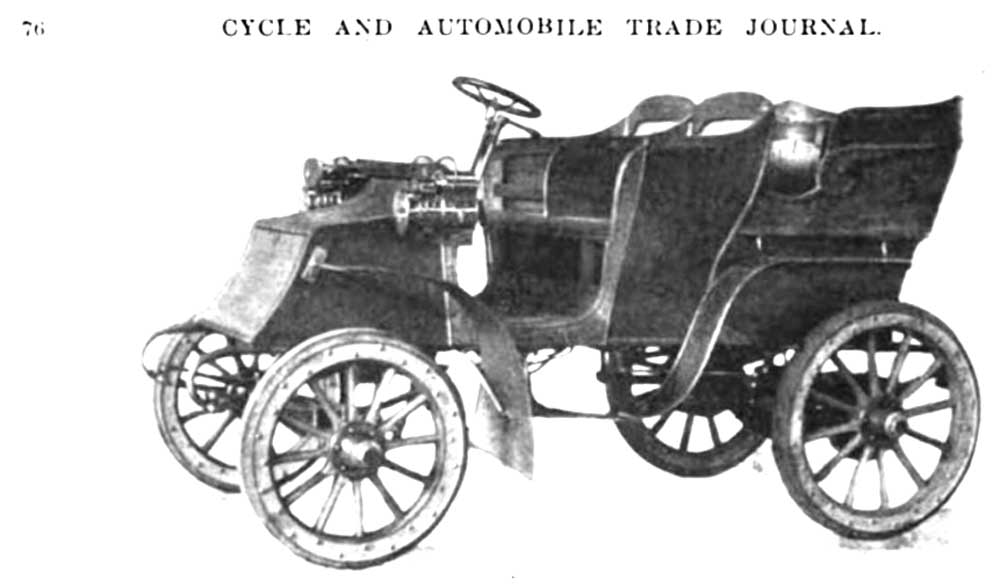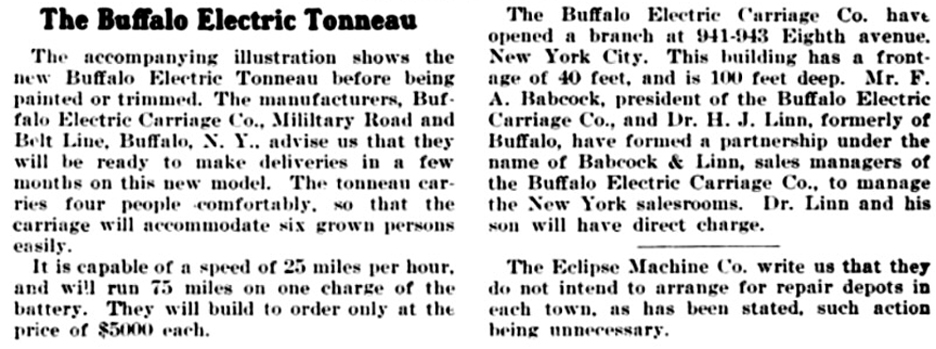Buffalo
Electric Carriage Co.
400 Military Road
(demolished)

1902 Stanhope
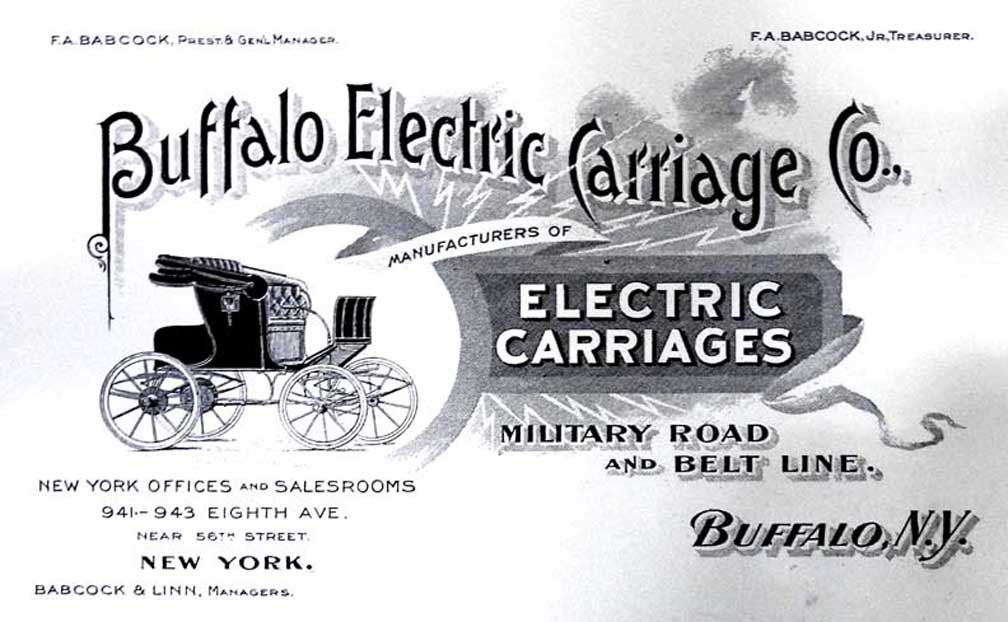
"The Buffalo Electric
Carriage Company (1900-1906), which became the Babcock
Electric Carriage Company
(1906-1912), changed its ownership again in 1912. It became
The Buffalo Electric Vehicle Company and
had a short life. It continued manufacturing at the 1911
complex at 1219-1247
Main Street in Buffalo
(at Northhampton St.) but by 1916, it was out of business,
one of 30 automakers that came and went in Buffalo
in the twentieth century." - Western
New York Heritage (online October 2017)
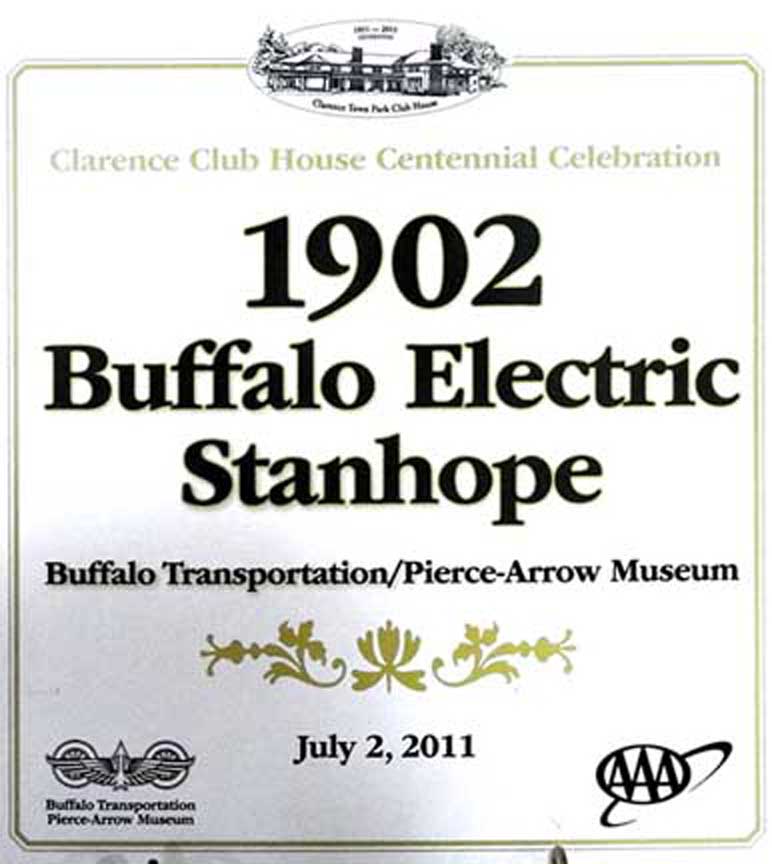
"... style called the stanhope" (also manufactured by other
companies) which featured a single bench seat, folding cloth top,
front buckboard, and tiller steering. A 1904 Buffalo stanhope cost
$1640 ($33, 864 in 2005 dollars)." -
Western
New York Heritage (online October 2017)
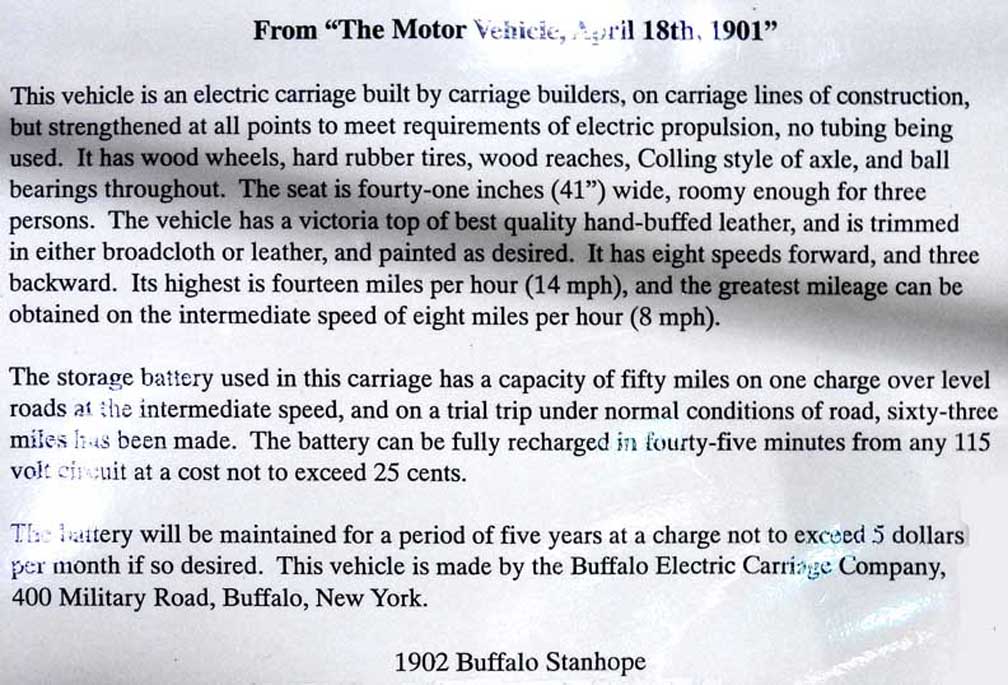
Victoria top: A touring car with a folding top usually
covering only the rear seat; a low, light four-wheeled
carriage for two with a folding top and an elevated driver's seat in
front.
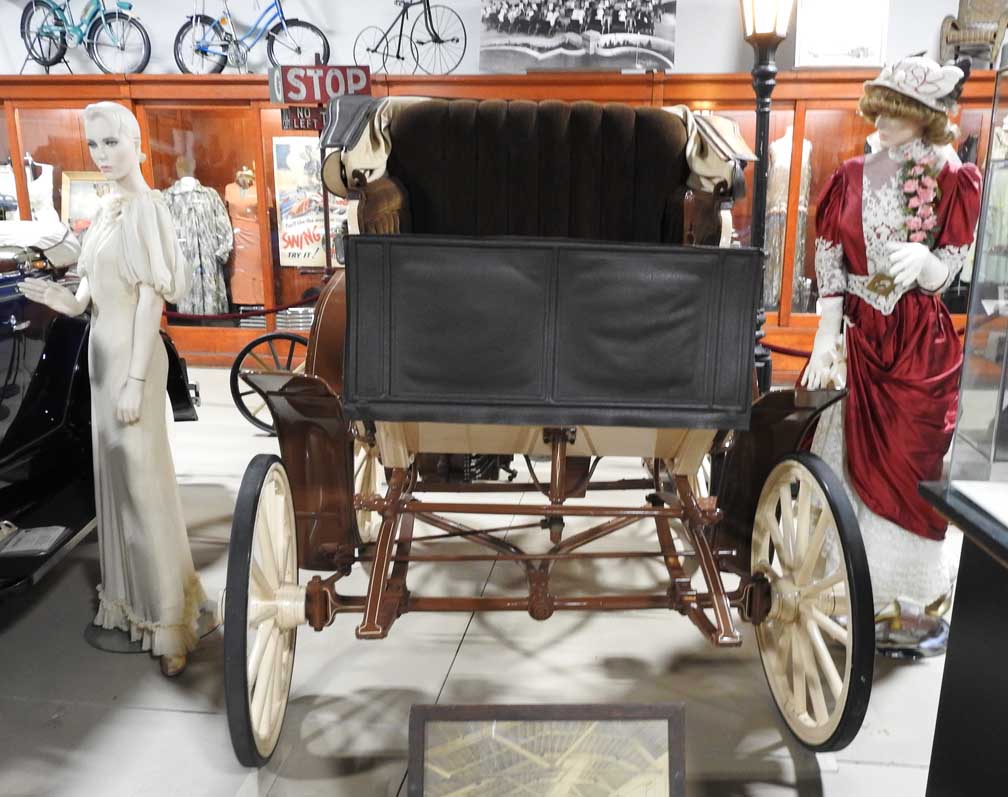
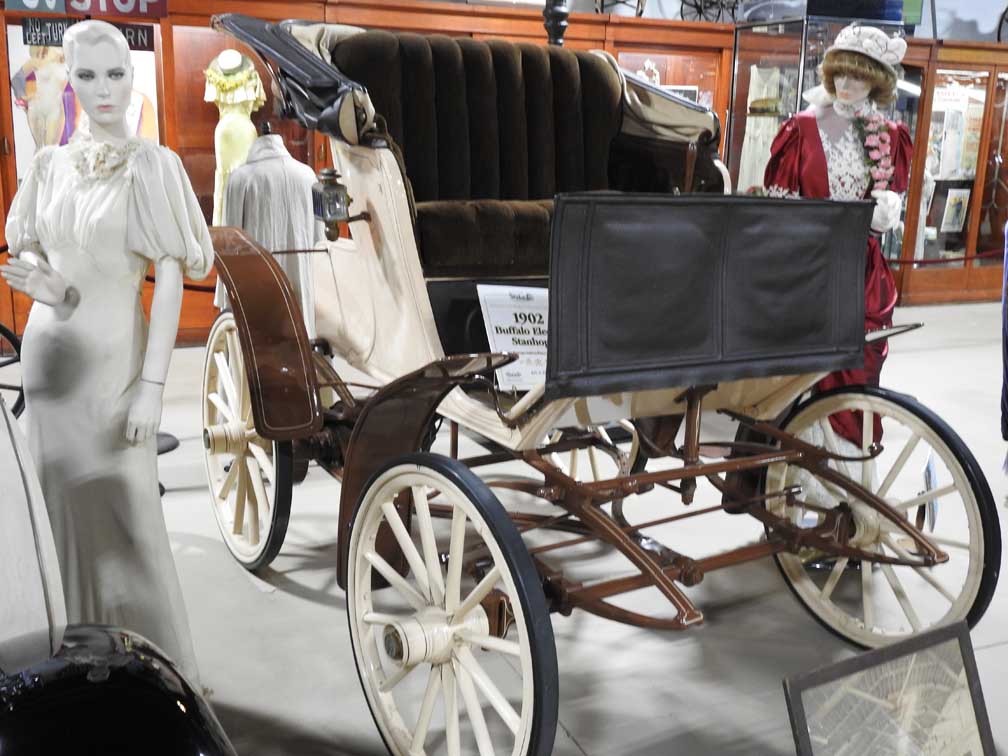
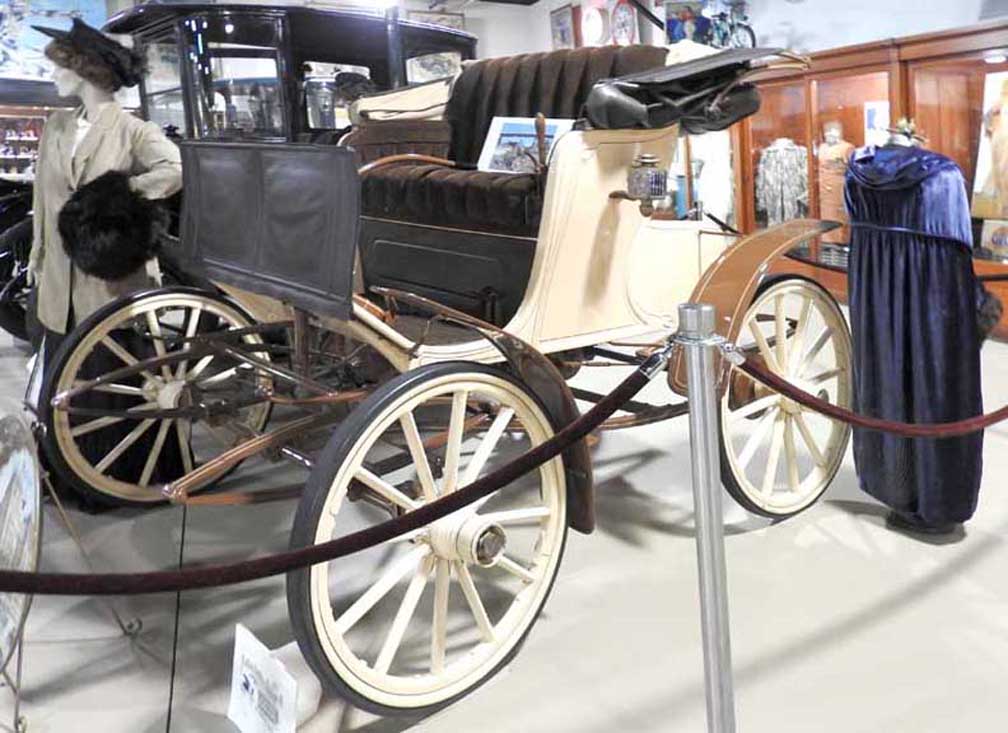
"This electric carriage, weighing roughly 1,800
pounds, features wood wheels, hard rubber tires and a Victoria
top. The quiet vehicle has eight speeds forward and three
backward. Capable of traveling at 14 miles per hour, the
carriage can run for 50 miles on one full charge on level
roads. The automobile was manufactured by the Buffalo
Electric Carriage Company, 400 Military Road, Buffalo, NY and sold
for $1,650." - The
Buffalo Transportation Pierce-Arrow Museum (online
October 2017)
Relevance of the mannequin and dress: "A
typical wealthy Buffalo couple might have two automobiles: an
electric for the women in the family and a gasoline auto for the
men in the family." - Western
New York Heritage (online October 2017)
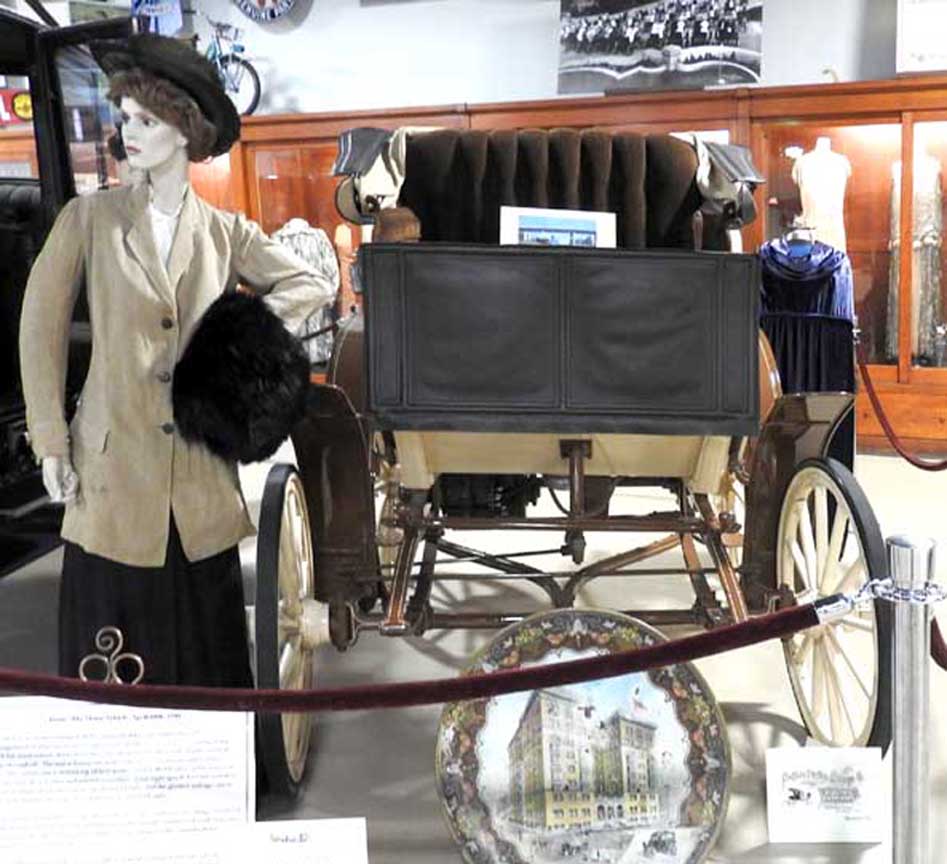
View from the front of the vehicle ...
Advertising plate detailed near the bottom of this page
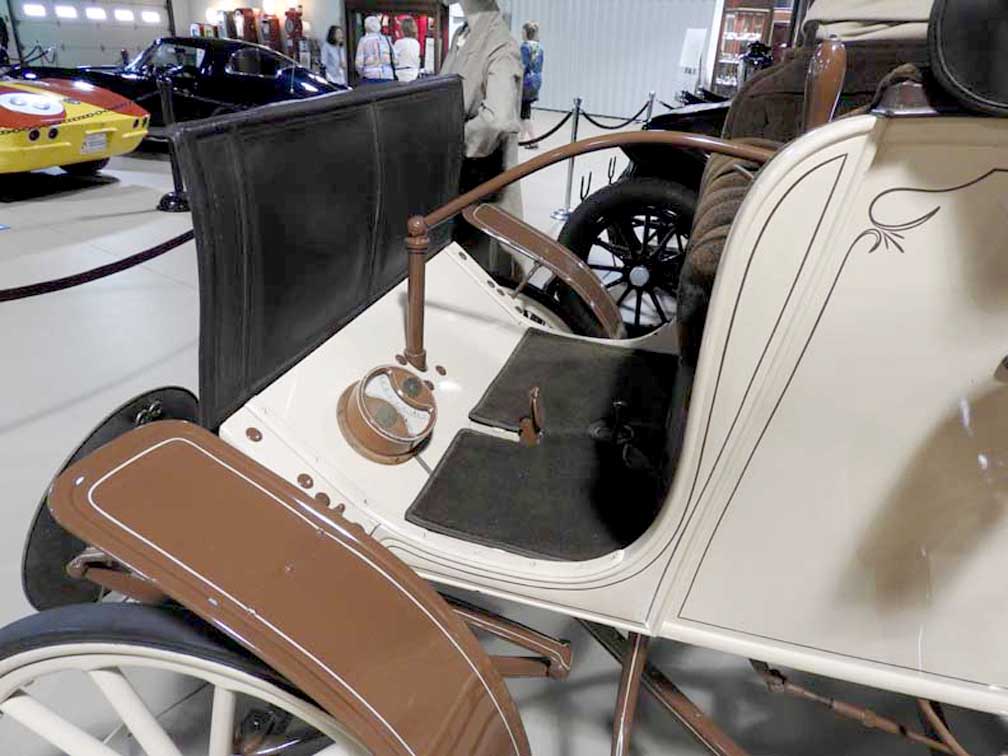
Single bench seat, front buckboard, and tiller steering
... Buckboarddefinition: A four-wheeled open
carriage with the seat or seats attached to a flexible board running
between the front and rear axles. ... Note the
gauge which is detailed below:
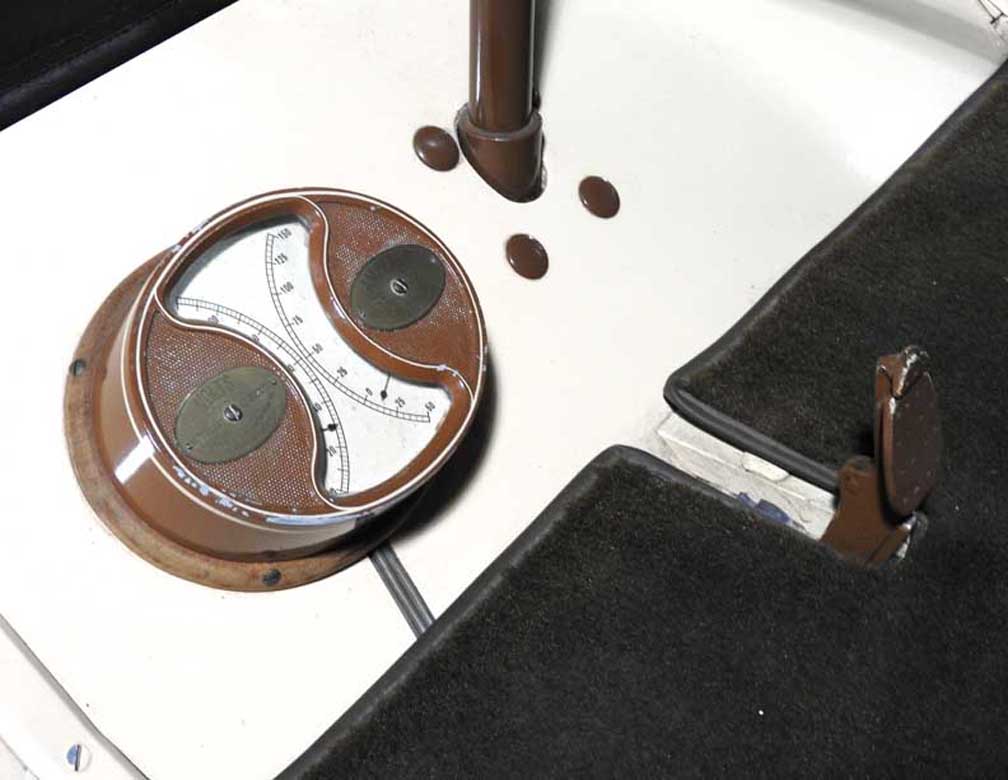
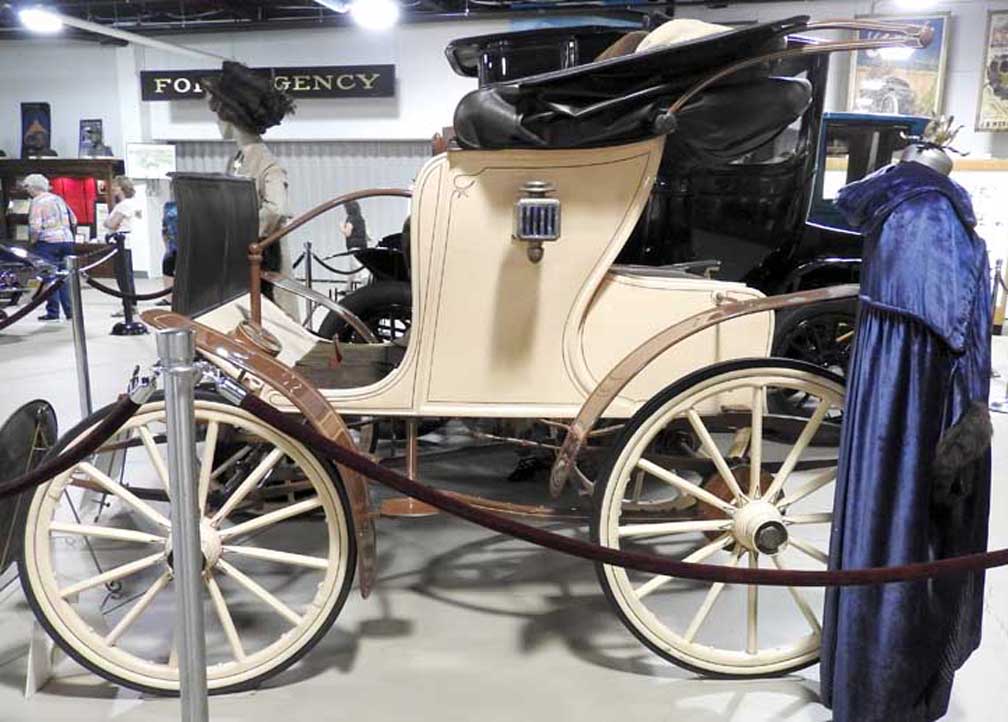
The cloth victoria top is folded down
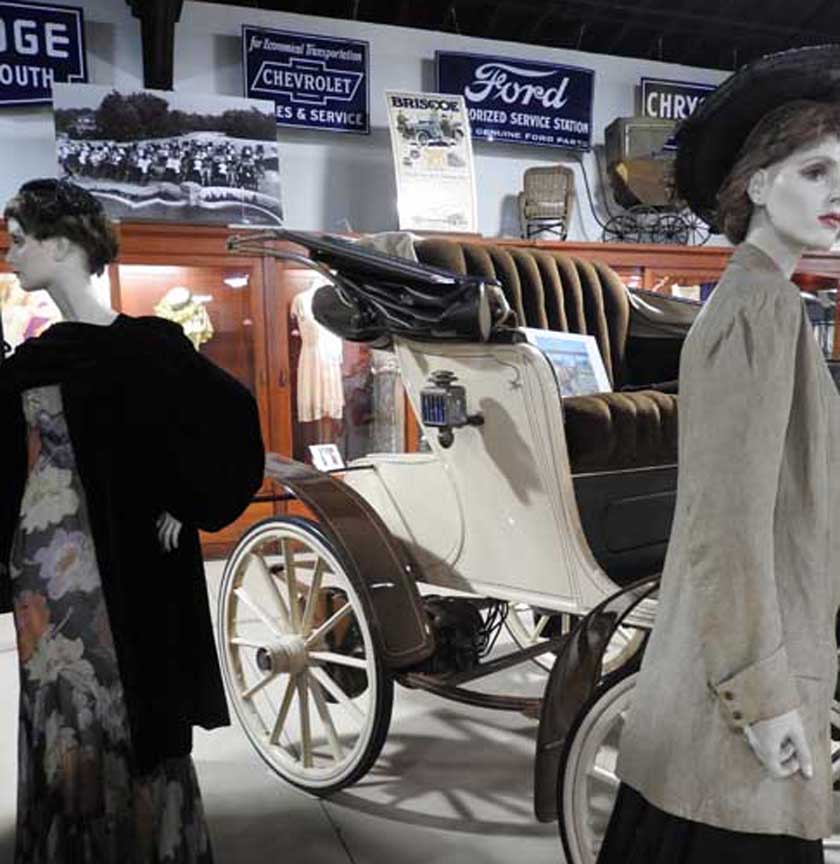
Single bench seat, folding cloth top
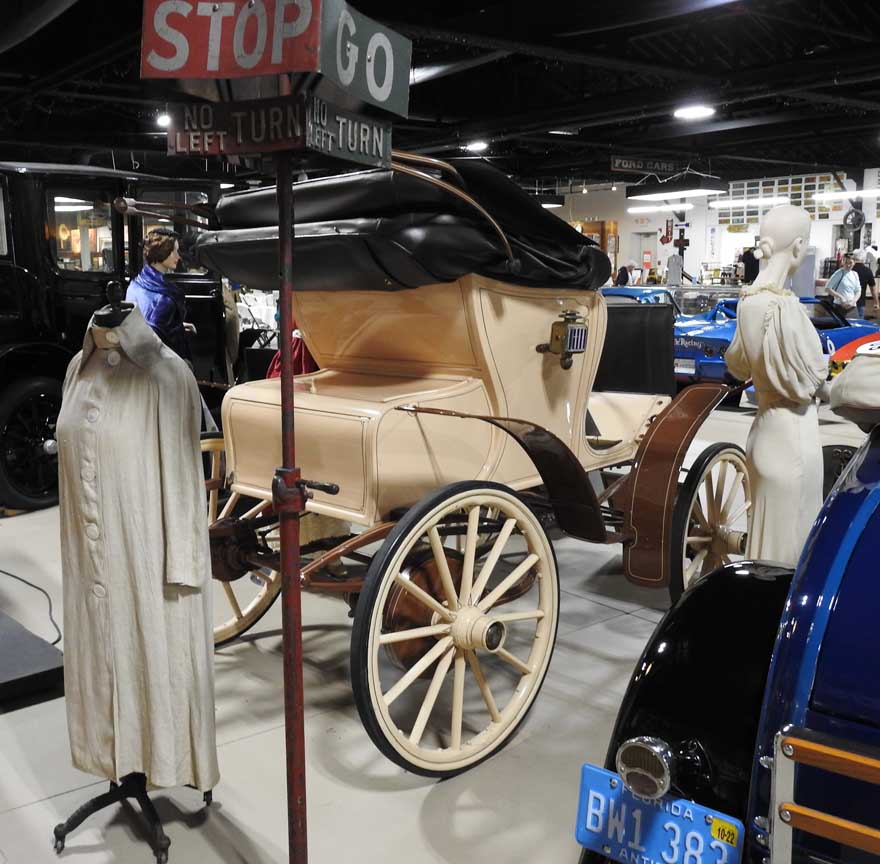
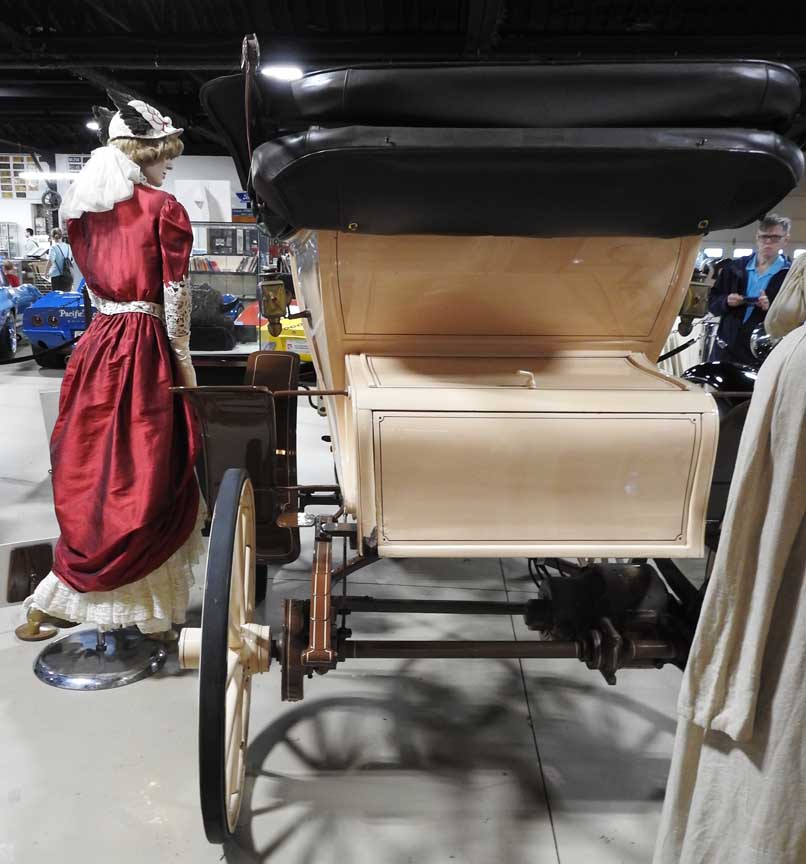
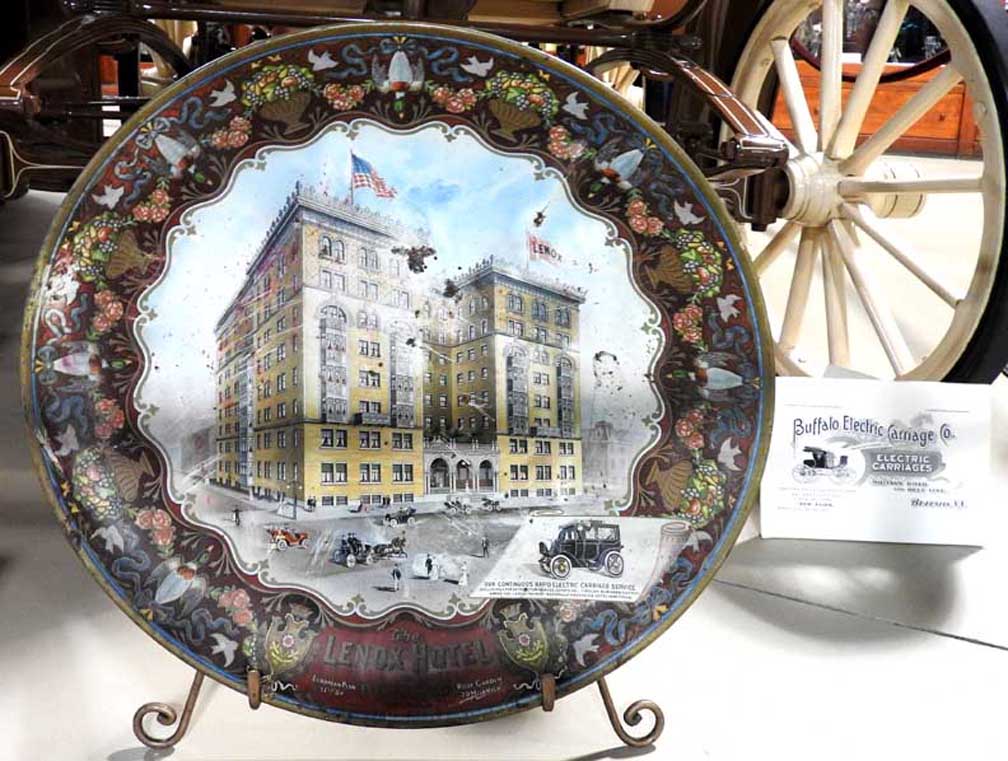
Lenox Hotel
... Detail below:
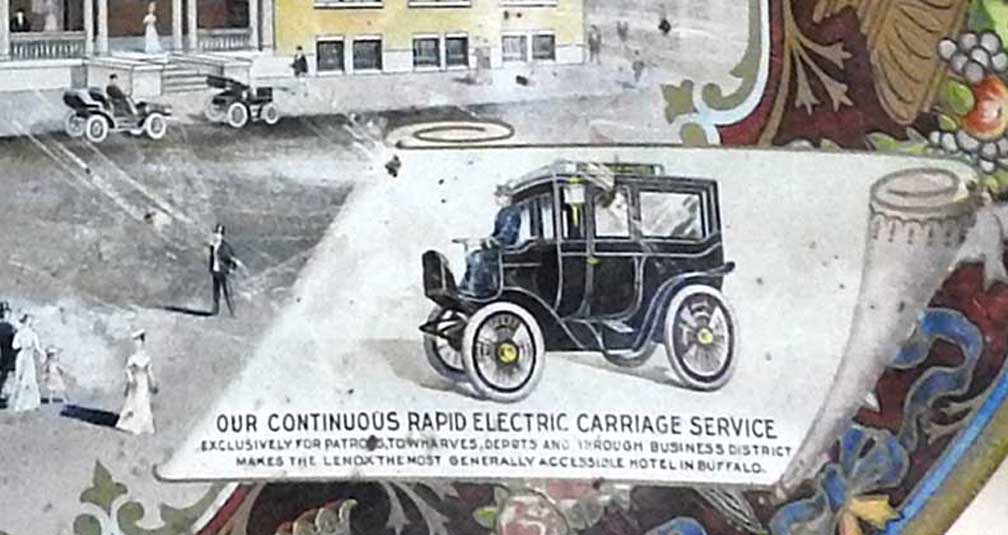
Note that this electric vehicle does not have a foldable victoria
top: it is not a Stanhope model ...
"A typical wealthy Buffalo couple might have two
automobiles: an electric for the women in the family and a
gasoline auto for the men in the family. The electric automobile
was quiet, easy to operate, and emission-free; it was also heavy,
slow, unable to climb hills, and in need of recharging after 20-50
miles. Such a vehicle was quickly marketed to women, doctors,
delivery businesses and others residing in an urban environment
where electricity for recharging was available." -
Western
New York Heritage (online October 2017)
|
|
Electric VS Gasoline Vehicles
Although in 1900, equal numbers of electric-, gasoline- and
steam-powered automobiles were produced in the U.S., it quickly
became apparent that electrics would not succeed in competition with
gasoline models (becoming more reliable each year) unless a
revolution in the electric battery came about that would result in a
lighter battery that would produce more power for a longer run per
charge. Thomas Edison took on this challenge and did produce an
early alkaline battery, but it was not powerful enough to replace
the lead-acid battery then used in electrics.
In 1908, there were 300 electric automobiles privately owned in
Buffalo; more were used daily by delivery companies. But Henry Ford
had begun mass-production of gasoline vehicles in 1904, driving down
the price of owning an automobile. And in 1913, a battery-powered
electric starter eliminated the dangerous manual crank-starting of
automobiles, opening the way for widespread ownership by women.
The Buffalo Electric Carriage Company (1900 - 1906), which
became the Babcock Electric Carriage Company (1906 - 1912), changed
its ownership again in 1912. It became The Buffalo Electric Vehicle
Company and had a short life. It continued manufacturing at the 1911
complex at 1219-1247 Main Street in Buffalo (at Northhampton St.)
but by 1916, it was out of business, one of 30 automakers that came
and went in Buffalo in the twentieth century.
- Western
New York Heritage (online October 2017)
|
















